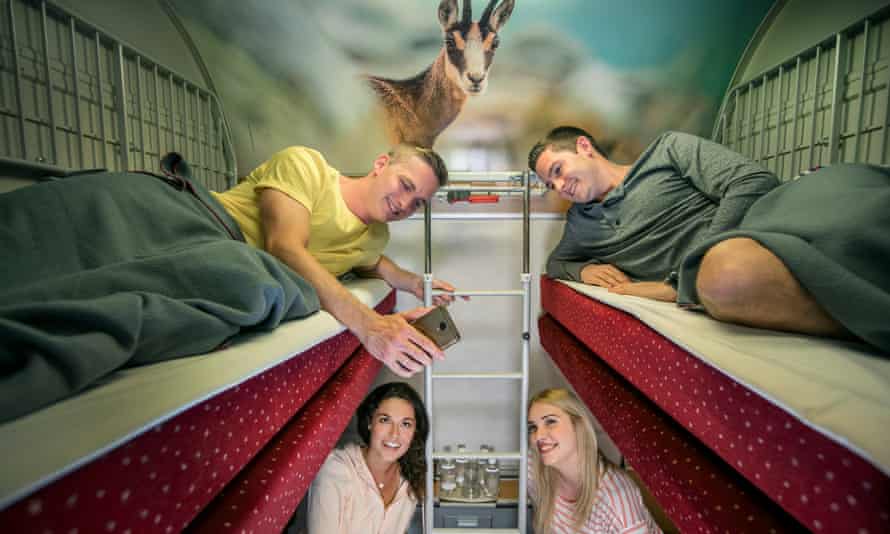It is being hailed as the latest evidence of a new dawn for the European sleeper train. Citing changes in attitude wrought by the two crises of the climate emergency and the Covid pandemic, a new night service in 2022 was announced last week between Brussels and Prague, stopping at Amsterdam, Berlin and Dresden, with tickets expected to cost from €60 one way.
But an even more ambitious project could deliver Britons to continental Europe via surely one of the most romantic modes of transport around, Elmer van Buuren, a co-founder of the European Sleeper cooperative, told the Observer.
“I think there’s also huge potential in eventually running sleeper trains through the Channel tunnel,” said Van Buuren. “Of course, introducing new services through the tunnel is something really ambitious that we are not, at the moment, ready for.
“But London and the UK is just that much further away from the rest of the continent that it would actually be very sensible to have a sleeper service,” he said. “Despite Brexit, I think there’s still many people in the UK that want to come to Europe for holidays and business so I think there’s definitely a market there.”
Van Buuren’s plan would be the realisation of a vision that nearly came to pass some three decades ago.

A fleet of sleeper trains for journeys via the new tunnel was built in the 1990s under plans for a “Nightstar” service connecting London, Plymouth, Swansea and Glasgow to Amsterdam, Frankfurt and Cologne. But rising construction costs and the rise in the popularity of budget airlines was thought to have made the project redundant. The plan was formally dumped in 1999. Some of the carriages were then sold to a train company in Canada where they are still in use between Montreal and Halifax.
Major bumps in the track remain today. The trains would need to be bespoke rather than sourced from existing rolling stock, driveable from each end, with a minimum length of 375 metres. They would require systems that can halt the spread of fire for the length of time a train is in the tunnel although experts say the existence of an evacuation tunnel running parallel with the two rail tunnels makes the route extremely safe.
Last summer the UK rail industry’s High Speed Rail Group published a report blaming the overly stringent tunnel regulations for holding back plans for sleepers. They called for the government to modernise the regulations in time for the Channel tunnel’s 30th anniversary in 2024 to take into account the fact passengers are now banned from smoking.
But whether those changes come or not, the costs would be significant for any such service – and Ryanair and easyJet are not going away.
Van Buuren, who founded the European Sleeper with Chris Engelsman, who runs the Noord West Express website promoting rail travel, nevertheless said he believed that the “Greta Thunberg effect” on public attitudes to flight and the impact of the recent health crisis offered grounds for optimism for the new Brussels to Prague line and a subsequent expansion of services.

The pan-continental sleeper will coordinate with Eurostar service timetables when the first new night train pulls away from a platform at Brussels Midi station next spring. Excitable rail enthusiasts, note that the announcement follows the launch of Austria’s Nightjet Brussels to Vienna service, which briefly commenced before the pandemic in 2020, offering something of a renaissance for the couchettes and twin bunks of the past.
The initial Brussels to Prague service will be run in partnership with the established Czech independent operator RegioJet, which owns the rolling stock. There will be seating accommodation as well as sleeping compartments, with free internet access and free coffee. Shares in the European Sleeper cooperative will be available to small investors from next month, Van Buuren said, adding that he had been cheered by an enthusiastic reaction to his announcement.
“The sleeper train is not as quick as a plane but you can board and you don’t need to queue up anywhere,” he said. “You can sit down, relax, read a book, prepare your meeting, watch Netflix, have a drink. You go to sleep. You wake up the next morning, you open your curtain and you’re in different worlds. I mean, how great is that? And more and more people are starting to understand that this is actually a different approach to the value of time.”




